In order to stay on top of everything I’ve made myself a calendar and included any concrete hand in dates I could find. I will probably need to update it as I go along, but for now it is a good start. I’ve also shared the file on the ideas wall in case anyone else would find it helpful. I’ve set it up as an SRA3 file to get the most out of the paper, so I can put it on the wall and scribble all over it.
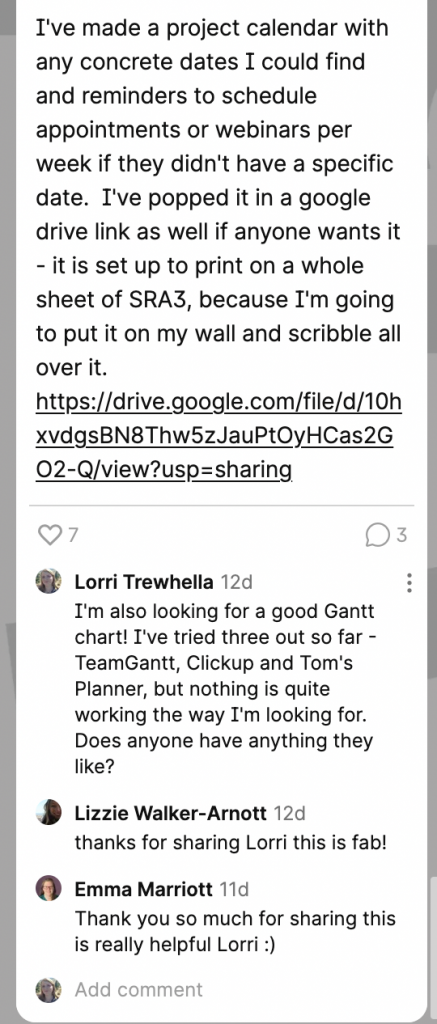
I’ve also experimented with Gantt charts. I can’t find anything that is quite right though, either there is not enough control over the chart entries, or it is so open ended I would be better off making my own. I’m not convinced a Gantt chart tool is the best way to organise this project, I do want the ”project at a glance” ability of the chart, but maybe I will be better off with calendar reminders for weekly tasks and a more simplified chart for reference.
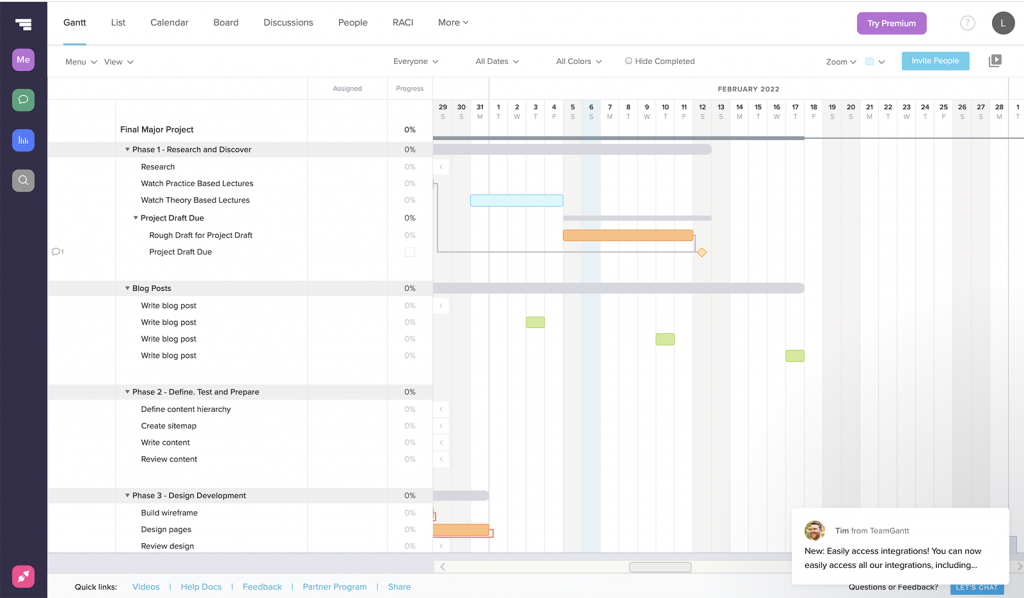
Team Gantt seems to be very flexible, but a lot of features are locked behind a paywall. I wanted to set a reoccurring weekly task, and there was no way to automate this. It would also put each entry on a separate layer, which would quickly make the chart unusable as an at a glance tool.
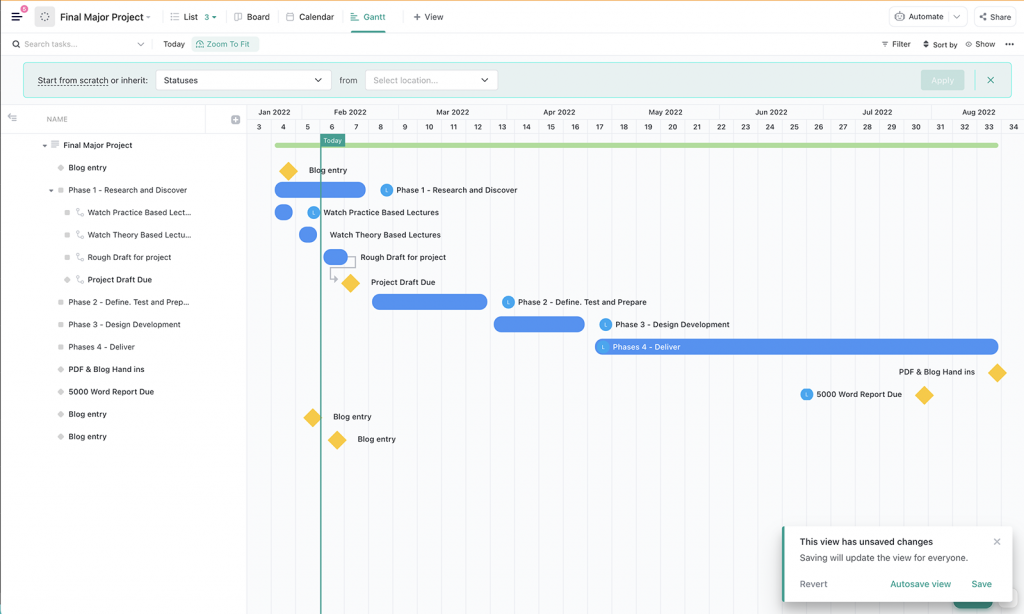
Clickup is a broader project management tool and seems to be very powerful and links to other services and apps. I think it would be very useful if I was working with a team of people. It does allow to set reoccurring tasks, (I have just had an email reminder that my blog is not finished yet!) but I found the lack of colour coding to be too frustrating. Each user is colour coded, rather than each task, if you were working with a team this would be a great feature, but as an individual working on a single project this was not ideal. While it does create the reoccurring tasks well, it still puts them on a new line, so I would also run into the issue of the project running off the screen.
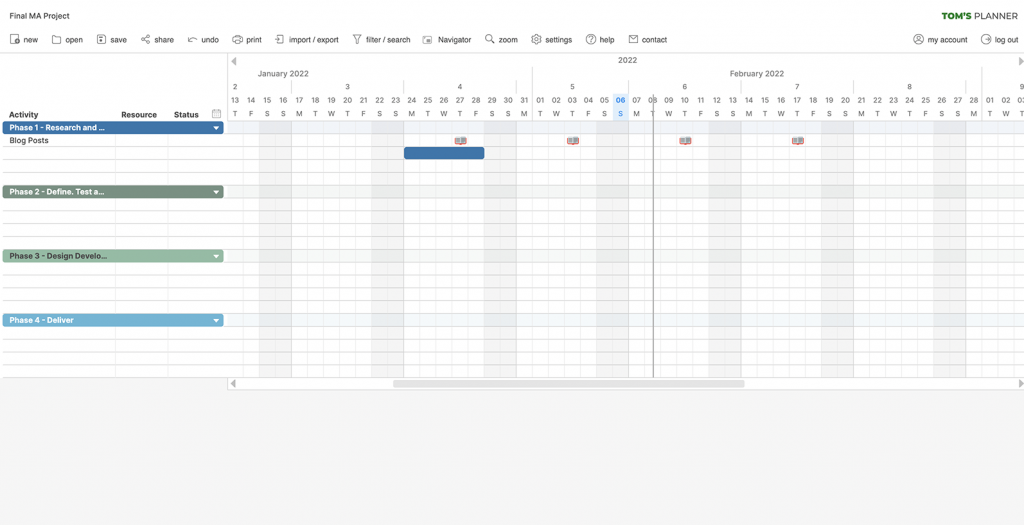
Tom’s Planner is very basic, but quite powerful. I am able to add reoccurring tasks inline with each other, but would have to add each one manually. I’m also able to change the colours but found adding entries and projects to take quite a long time.
I think my calendar will be the most useful organisational tool for me, but am still keen for an at-a-glance overview somehow. I will need to come back to this.
Resource Notes
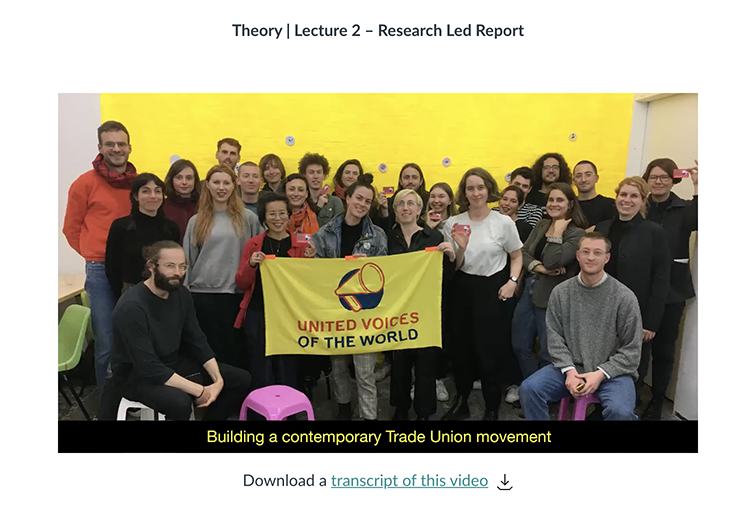
Theory | Lecture 2 – Research Led Report
I found this lecture very interesting and topical with what has happened this week on r/antiwork. r/antiwork is a subreddit that has taken off in popularity lately only to suffer from a massive backlash a few days ago after a poorly received interview from one of the moderators on Fox News. There is a much broader question of employment in general, with workers rights becoming a huge issue globally. I’ve struggled with finding adequate employment, living in a rural part of the UK with low wages and a lack of industry. Even though Cornwall has quite a healthy design scene, you still run into the problem of low Cornish wages as well as blurred job lines endemic to design hiring. In addition to this I’ve had issues with needing flexibility due to childcare needs. In the past few years I’ve had a number of very promising interviews fall flat as soon as I asked for flexible working conditions, in spite of the fact that I had a proven track record of hybrid working and freelance experience. I found employers were incredibly suspicious of working from home. With businesses being forced to embrace work from home I am now seeing more jobs open to the possibility of remote work permanently so I’m hopeful there will be more options.
Topic Ideas
I’ve combed through my past projects and have pulled together a list of previous ideas that I would still be interested in exploring. I find this a very challenging exercise, as I am so used to having an outcome based working style. With print design you start with an outcome in mind as you need to account for production feasibility and costs. This is inbuilt as the first consideration while working within the print industry, so it is throwing my workflow off to broaden that up and not jump into an outcome straight away. That isn’t to say there isn’t flexibility in print design, but there are tighter parameters for projects. Being broader also rules out several projects that I would like to work on (such as my Mermaid of Zennor pop up book) because the outcome is already the focus.
Rockpools – How can design help to educate children and increase access to the coastal environment?
Mythological creatures – nothing concrete for this one, I just really love mythological creatures and mythology in general. Could develop into a book/blog/products
Print making – skills based, or how can I create a 3d printed plates for print making. This touches on an experiment from week 9 in GDE710.
https://dianakohne.com/pocketpress/
https://www.instagram.com/openpressproject/
https://www.creativeprintersoflondon.co.uk/product-page/cpl-ez-etch-press-packages-now-available
Cornish Treasure Candles – develop as an actual company, scope would include branding and packaging design, learning to make candles, art direction, web design, marketing, collaboration, writing a functional business plan and seeking funding.
Set up a stationery company – this could be business plan based?
Observational sketchbook project – I think this needs to be a component in whatever I end up doing
Cornish Folktales and the Mermaid of Zennor – I already covered this, along with Quoits and standing stones in previous modules. Could I continue to push the Cornish Myths project? Myth and storytelling are a topic I’ve loved since I was very small, and I think there is more I could do with this, I’m just not sure what.
My Great Grandmother – I will do this one day! However; I’d like to visit Sweden and really explore that portion of my heritage properly. I don’t think I will have enough time or resources to make this happen in time, so it is one to pack away for later.
Robert Brown’s Eight Questions helped me in previous modules, so be sure to ask myself these questions at the end.
Who are the intended readers? – list 3 to 5 of them by name;
What did you do?
Why did you do it?
What happened?
What do the results mean in theory?
What do the results mean in practice?
What is the key benefit for your readers?
What remains unresolved?
Peer-led session
I attended my first peer-led session this week. I think the student led group crits have been the most helpful throughout the course, so I’m looking forward to incorporating these each week. We all agreed that having a regular group would be helpful, as we will all be able to become familiar with each other’s projects and give more useful feedback than needing to start from scratch every session. I may also dip into other sessions in a week if I need to for scheduling reasons. We have also set up a smaller Whats App group. This is already more helpful than the Ideas Wall has been, as I haven’t seen much uptake there, and Padlet is very limiting. We did end up talking too much about my candle idea, which I’ve already established I don’t want to do. The problem is that it is a real and viable business idea, so I keep coming back to it, and everyone was very keen to help me with practicalities surrounding it. I don’t want to start a candle company though, and I feel like the idea is coming from a very cynical and commercial point of view, that there is a niche untapped in the Cornish market that would do very well selling overpriced candles to wealthy tourists.
References
TEMPLETON, Jamie. 2017. Brown Wooden Plank Fence with This Way Signboard. Unsplash.com. Unsplash. Available at: https://unsplash.com/photos/6gQjPGx1uQw [accessed 6 Feb 2022].
